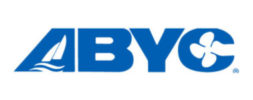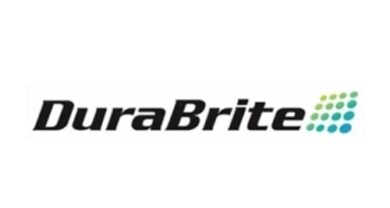Making Challenges into Opportunities
Marine paints and coatings manufacturers have had to deal with economic and regulatory issues during the past few years. Most companies, however, have transformed them into opportunities for their business.
While other companies in the boating industry are struggling because of the economy, paint and coating manufacturers are persevering because their products are often needed to launch a boat into the water and to perform basic maintenance. Many companies have dealt with the soft economy by introducing new products that save the painter time and money.
3M, for instance, recently introduced its Paint Preparation System (PPS), which uses one cup for mixing, filtering and spraying of material through a paint gun. The big savings, according to Linda Bailey, marketing manager within the 3M Marine division, are realized when it’s time to clean the gun after shooting. Only a small amount of solvent is needed to clean the PPS compared to traditional systems where much more is used.
A second advantage of 3M’s system, which can be used for gel coats, varnishes, stains, adhesives and paints, is that the gun can be moved at any angle when applying the material. It is not restricted to only side-to-side motion because the cup uses a collapsible liner that forces airtight flow of material, Bailey said.
She noted that PPS can be used anywhere a paint gun may be used and that it has been selling to boatyards, custom boat builders and OEMs.
IMO Regs Pose a challenge
Another major challenge that the marine paints and coatings segment of the boating industry has had to tackle is the International Maritime Organization’s (IMO) resolution to ban the application of organotin-containing antifouling paints. This resolution makes it illegal to apply or re-apply antifouling paint containing Tributylin (TBT) or other organotin compounds onto any vessel after Jan. 1, 2003. By Jan. 1, 2008, they will be totally prohibited. The IMO, which is a subcommittee of the United Nations, has agreed on this treaty to ban tin globally.
Countries that represent 25 percent of the world’s shipping tonnage have to sign this treaty for it to become a global ban; the United States has already signed it.
Tributylin TBT, a harmful organotin that harms the marine environment, has been used in many antifouling paints. Many paint and coating manufacturers, therefore, have had to adjust their products to account for the IMO regulations.
Interlux, a yacht paint brand that is part of Netherlands-based Akzo Nobel’s coatings group, has recently released Micron 66, which is a self-polishing copolymer without tin.
“It is still legal to apply tin, but the fact of the matter is that it is going away,” said Bob Donat, a marketing manager for Interlux. “The EPA wants all paint companies out of tin. If you have it on your boat now, you need to strip it or cover it up.”
Interlux has more than 50 percent of the United States market share of antifouling paints, according to Donat. He also said no other companies have technologies like Micron 66, which gives a level of performance comparable to and even better than tin. It is long lasting and fuel efficient, Donat added.
Interlux is also the only marine paint manufacturer using Teflon in some paints. Donat noted that the benefits of this material include its non-stick quality and durability.
Interlux’s biggest competitor is Pettit Marine Paint, which is a subsidiary of RPM, Inc.
Pettit, which is based in Rockaway, N.J., has also worked to develop paints that avoid using tin. By the end of this year it will release a tin-free antifouling paint for aluminum called Alumacoat SR. This replacement for TBT-containing paint will be comparable in performance to traditional antifouling paints, according to Joe Petrocelli, manager of customer service at Pettit.
“As the market changes, we adapt to make sure we have products that meet whatever laws or regulations come down,” Petrocelli said.
A newcomer in the recreational paint market, SeaLife Marine Products, Inc., also is addressing the TBT ban with its new products. Its SeaLife 1000 Antifoul Paints are TBT-free and have been specifically engineered not to leach any biocides, pesticides or other toxins into the environment, according to the company.
The antifouling paints employ reactive hydrolysis, which produces a surface that becomes uniformly smooth when coming into contact with water, SeaLife reported. One difference between its products and those of its competitors is that SeaLife’s product lasts up to six years before another application is necessary, said Marika Borofsky, vice president of media communications.
Among the boat builders field testing the products are Carnival Cruise Lines and Grand Banks Yachts, according to Sea Life.
By continuing to increase product lines and adapting to a changing environment, marine paint and coating companies have been able to perfect well despite the industry’s challenges.
—Katie Holloway
Micron 66 from Interlux
Micron 66 is the first self-polishing copolymer (SPC) technology that does not contain Tributyltin (TBT)-containing antifoulings according to the company. This antifouling, developed and patented by Interlux, uses SPC technology
that reacts with salt water in a controlled manner, sustaining the release of biocides throughout the lifetime of the antifouling without decline. The boat, therefore, is protected from fouling build-up even when stationary for a long period of time. Micron 66 also protects against everything from slime, algae and weed to shell fouling. This product is superior to TBT-containing antifoulings because it uses Biolux SPC, which is a technology that better controls biocides, the company states. The result is longer-lasting protection,
a foul-free bottom and no paint build-up. Contact 908/686-1300 or www.yachtpaint.com.
Trilux Prop & Drive from Interlux
A TBT-free aerosol antifouling paint for aluminum outboards and outdrives is now offered from Interlux. The Trilux Prop & Drive has been formulated with Biolux to provide antifouling protection by controlling slime. This paint can be used in fresh, salt and brackish water. Contact 908/686-1300 or www.yachtpaint.com.
Fiberglass No Sand Primer from Interlux
Interlux has developed Fiberglass No Sand Primer, which eliminates the need to sand the gel coat prior to applying antifouling paint to new or unpainted boats. This primer chemically attaches onto the bare gel coat while providing a chemical bond between it and the antifouling paint. It is compatible for use over polyester and vinyl ester gel coats and epoxy-primed surfaces. Contact 908/686-1300 or www.yachtpaint.com.
Paint Preparation System from 3M
3M offers a new spray system, the Paint Preparation System (PPS), that allows the material to be mixed, strained and sprayed through a single cup and liner. It can be used with paint, varnish, gel coat, adhesives and other materials. Also, the system features a vacuum system that causes the liner to collapse during application so the gun can spray at any angle, including upside down. Contact www.mmm.com/marine.
Cukote Biocide from Sea Hawk
New Nautical Coatings, Inc. now offers Sea Hawk Cukote Biocide with Biocontrol, which protects against both hard and soft foulants to improve boat speed. It does this by adding an organic algaecide to Sea Hawk Cukote’s self-polishing, high cuprous oxide formula. This bottom paint can be used on all vessels in all water types and temperatures. Contact 800/528-0997 or www.seahawkpaints.com.
Hyspeedkote from Marine Polymer Group, Inc.
Hyspeedkote is a hydrophilic polymer spray coating that maintains a film of water on underwater surfaces with the result of reducing hull drag. This water against water layer increases performance, speed and fuel economy of the vessel. The coat is effective on any surface and lasts up to two years. Contact 866/886-8830.
SR-21 from Pettit Marine Paint
Freshwater boaters have a new choice in antifouling paints with SR-21 from Pettit Marine Paint. This paint combines copper and Irgarol to create a dual biocide, thin-film antifoulant that is effective against zebra mussels and slime. This no-drag coating is ideal for performance boats, both sail and power, according to the company. Contact 800/221-4466.
Ultima SR from Pettit Marine Paint
Pettit offers a tin-free paint called Ultima SR that uses copper and Ciba Irgarol, which is a slime-resistant technology that blocks photosynthesis in algae. This ablative antifouling paint allows for controlled wearing away of paint film to provide a continuous source of fresh biocides to maintain a smooth surface. It is also self-polishing, which eliminates build-up. Contact 800/221-4466.
The Fooler from Redtree Industries, Inc.
The Fooler, from Redtree Industries, is a marine paintbrush that is double thick to retain more coating per dip than the standard thin chip brush. It is disposable and compatible with marine coatings such as epoxies, bottom paints, resins and teak sealers. Contact 973/481-0200.
Corrosion Block from Pacific Corrosion Control Corp.
Corrosion Block is an anti-corrosion compound formulated to perform in the marine environment. It is a clear ultra-thin fluid that leaves an atmospheric barrier to protect the base metal on interior surfaces. This product will penetrate the corrosion on the surface of the metal and isolate it electrically from the base metal. Once it has penetrated into the corrosion cell, it displaces and encapsulates any moisture present in the cell and bring it to the surface to evaporate. Contact 800/482-2223 or www.corrosion-control.com/corrblock.html.
Aquagard II Outdrive/Outboard spray paint from Flexdel Corp.
An outdrive and outboard motor spray paint that does not contain tin or copper is now offered by Flexdel Corp. It is specifically designed to retard marine attachments by providing an invisible barrier to inhibit the growth of algae. Aquagard II is fortified with Bioshield. Contact 732/901-7771 or www.aquagard-boatpaint.com.
Woodsealer from Burgess Chemicals
Burgess has developed a resin-rich “hydrosol” with its Woodsealer. It contains light-fast pigments that enhance the wood’s natural color and grain, according to the company. It also protects the wood from sunlight and water. Contact www.woodsealer.co.uk.
Inflatable Coatings from Marine Development & Research, Corp.
Inflatable Coatings are designed for use on Hypalon, PVC and rubber inflatable craft. It is a water-based, flexible vinyl that comes in top coating or bottom coating. The bottom coating product is an antifouling that contains cuprous oxide. Contact www.mdramazon.com.
SeaLife 1000 Antifoul Paints
SeaLife Corp. is offering SeaLife 1000, a solvent-based, highly modified poly acrylic vinyl co-polymer antifouling, anticorrosive paint for use on any type of pleasure craft. The paint is TBT-free, 2003-compatible, and has been engineered specifically not to leach any biocides, pesticides or other toxins into the marine environment. The products employ reactive hydrolysis, which produces a surface that becomes uniformly smooth when coming into contact with water effectively reducing drag, enhancing performance and reducing fuel consumption, according to the company.




